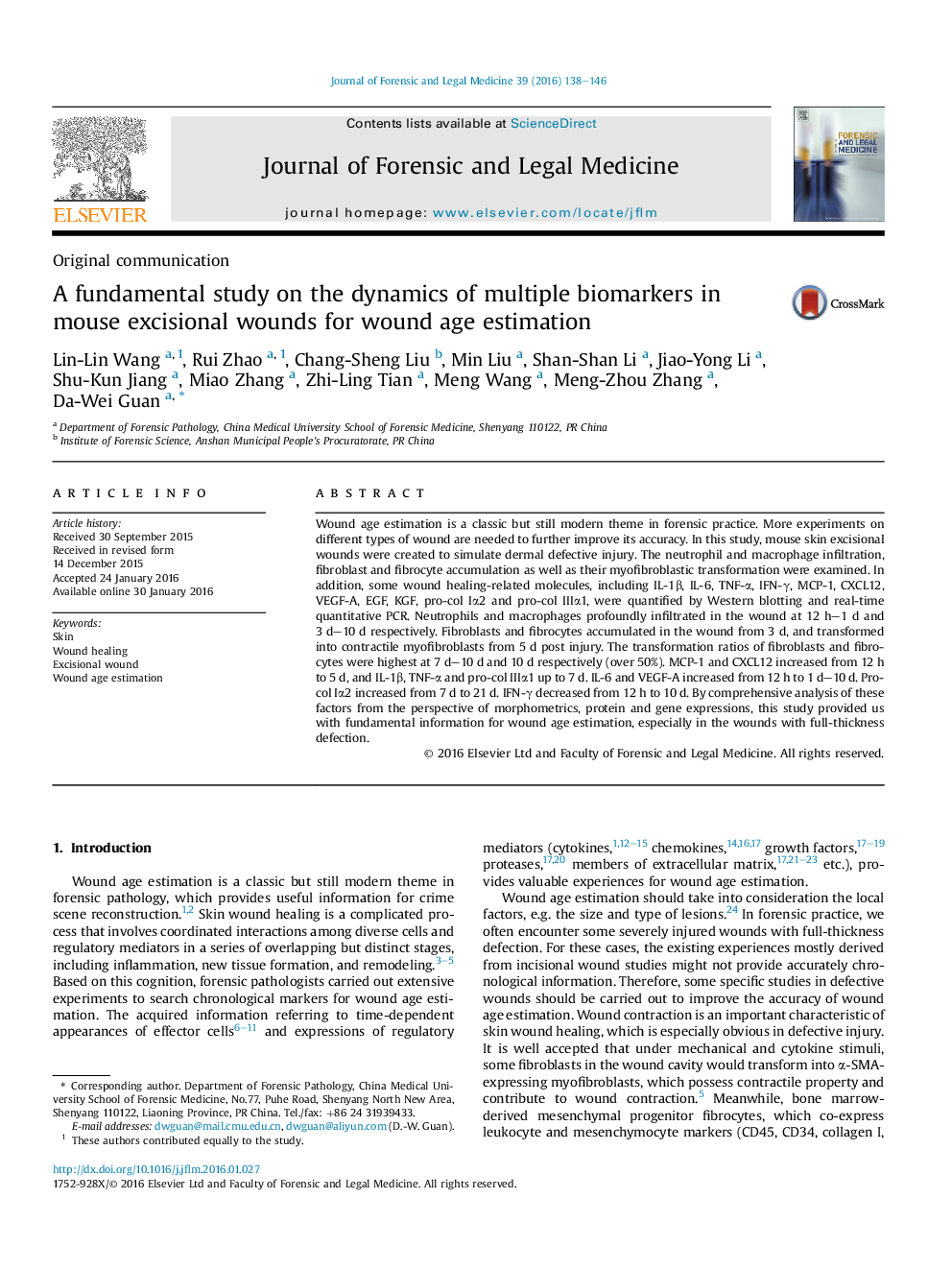| کد مقاله | کد نشریه | سال انتشار | مقاله انگلیسی | نسخه تمام متن |
|---|---|---|---|---|
| 101654 | 161287 | 2016 | 9 صفحه PDF | دانلود رایگان |
• Mouse skin excisional wounds were created to simulate dermal defective injury.
• Multiple biomarkers were measured and analyzed comprehensively.
• Fibroblast and fibrocyte transformation were highly discriminative parameters.
Wound age estimation is a classic but still modern theme in forensic practice. More experiments on different types of wound are needed to further improve its accuracy. In this study, mouse skin excisional wounds were created to simulate dermal defective injury. The neutrophil and macrophage infiltration, fibroblast and fibrocyte accumulation as well as their myofibroblastic transformation were examined. In addition, some wound healing-related molecules, including IL-1β, IL-6, TNF-α, IFN-γ, MCP-1, CXCL12, VEGF-A, EGF, KGF, pro-col Iα2 and pro-col IIIα1, were quantified by Western blotting and real-time quantitative PCR. Neutrophils and macrophages profoundly infiltrated in the wound at 12 h–1 d and 3 d–10 d respectively. Fibroblasts and fibrocytes accumulated in the wound from 3 d, and transformed into contractile myofibroblasts from 5 d post injury. The transformation ratios of fibroblasts and fibrocytes were highest at 7 d–10 d and 10 d respectively (over 50%). MCP-1 and CXCL12 increased from 12 h to 5 d, and IL-1β, TNF-α and pro-col IIIα1 up to 7 d. IL-6 and VEGF-A increased from 12 h to 1 d–10 d. Pro-col Iα2 increased from 7 d to 21 d. IFN-γ decreased from 12 h to 10 d. By comprehensive analysis of these factors from the perspective of morphometrics, protein and gene expressions, this study provided us with fundamental information for wound age estimation, especially in the wounds with full-thickness defection.
Journal: Journal of Forensic and Legal Medicine - Volume 39, April 2016, Pages 138–146
